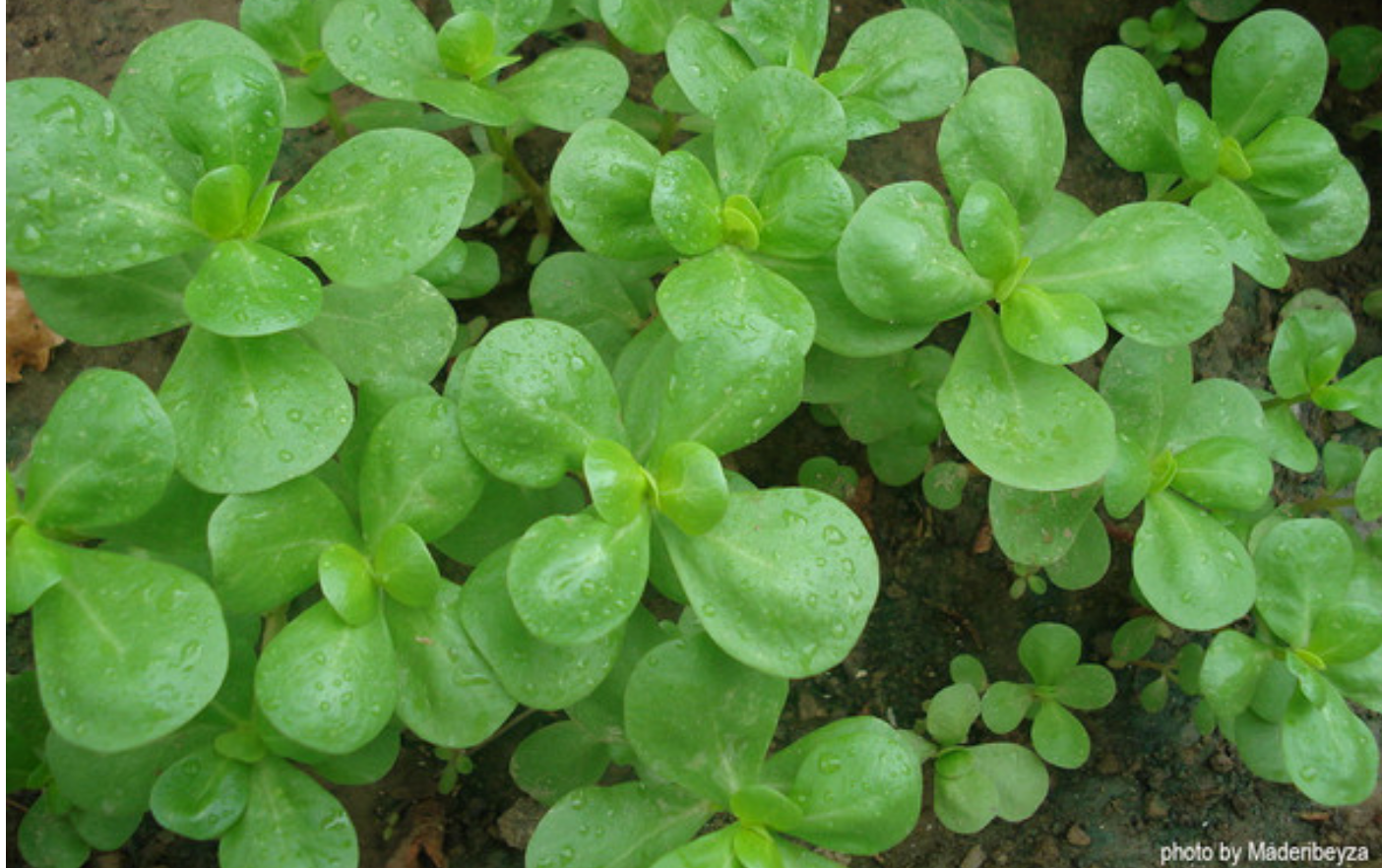
By Chad Borseth, NS/S Assistant Retail Manager.
With the monsoon rains rolling across the Sonoran desert, the weeds are growing like, well, weeds. But not all are unwanted guests that suddenly occupy your garden. I personally like to consider them "no effort" annual food crops. They are abundant and resilient plants, and some of them, like Purslane, are edible treats.
Common Purslane or simply Purslane (Portulaca oleracea) is one of the most common wild monsoon greens. This should not be confused with another similar plant called Horse Purslane (Trianthema portulacastrum) which, while edible, is much less palatable and may irritate the throat. These two often grow side by side in places where the earth has been disturbed. If you are not lucky enough to have Purslane grow wild near you, Native Seeds/SEARCH sells Golden Purslane; a cultivated variety that is great for eating.
Purslane is an annual succulent made up of petite green teardrop-shaped or spatulate leaves that grow on dark red stems. The leaves are smooth and shiny, and can vary in size from one half to two inches in length. The stems can be up to twelve inches in length and tend to grow in a sprawling fashion creating mat-like patches of Verdolagas wherever it’s planted. The fresh leaves contain surprisingly more omega-3 fatty acids (a-linolenic acid) than any other leafy vegetable plant. It is an excellent source of Vitamin A, also among the highest in leafy greens. Purslane is also a rich source of vitamin C and some B-complex vitamins like riboflavin, niacin, pyridoxine and carotenoids, as well as dietary minerals, such as iron, magnesium, calcium, potassium, and manganese.
Purslane can be eaten raw cooked or even pickled like relish. Leaves that are picked in the morning seems to have a more tart flavor than those harvested mid day or evening. Purslane can be found in markets and cuisine all over the world. Here in the Sonoran desert, they are often called Verdolagas. Verdolagas are frequently served as a side with meats or mixed with eggs. Here is my recipe for a delicious omelet that includes Verdolagas and Amaranth greens. Both are fantastic summertime greens that have been deemed as weeds by many.
Sonoran Wild Greens Omelette
Ingredients:
½ C. White or yellow onion (diced)
½ C. Anaheim or Poblano chile (Jalapeño if you like it spicy)
½ - ¾ C. Purslane (leaves and tender stems)
½ C. Amaranth greens
½ C. Shredded Cheddar or longhorn cheese
4 eggs
2-3 tbs of your favorite cooking oil
Salt and pepper to taste
Cooking Instructions:
- Sauté onion and chile in oil until the onions are translucent.
- Add Purslane and amaranth greens. You may want to remove from heat or turn the heat down as the greens wilt very quickly.
- Once your greens have wilted and have been mixed with onion and chile, set aside as filler for the omelet.
- Add oil to your pan and return to heat.
- While your pan is heating, crack and scramble your eggs.
- Add to your hot pan and season with salt and pepper. I like to add half my cheese while the egg is still runny.
- After seasoning to taste, add your greens and chile mixture to the center. Fold over and cook until done to your satisfaction. I reserve half of my cheese to go on top, and enjoy this dish with a bit of Crema Mexicana or sour cream on the side.



